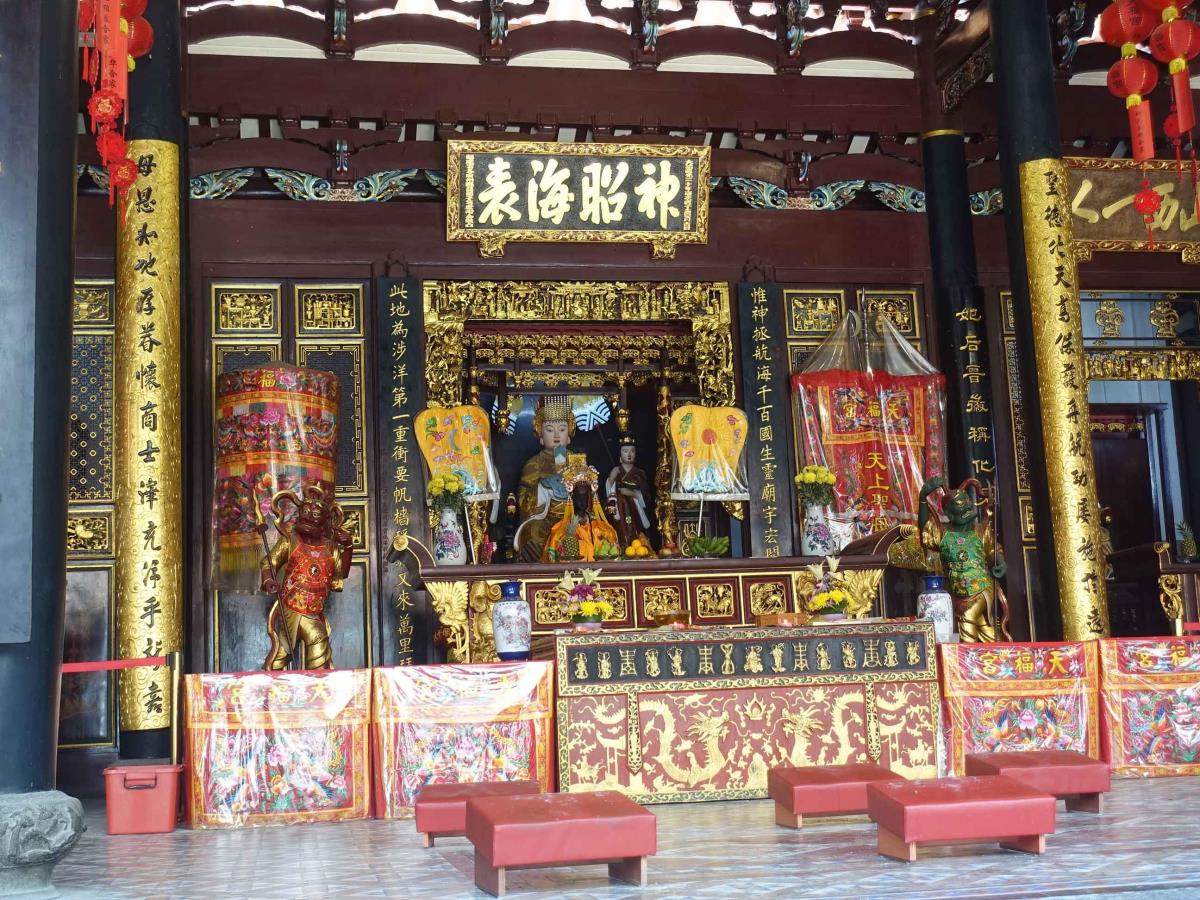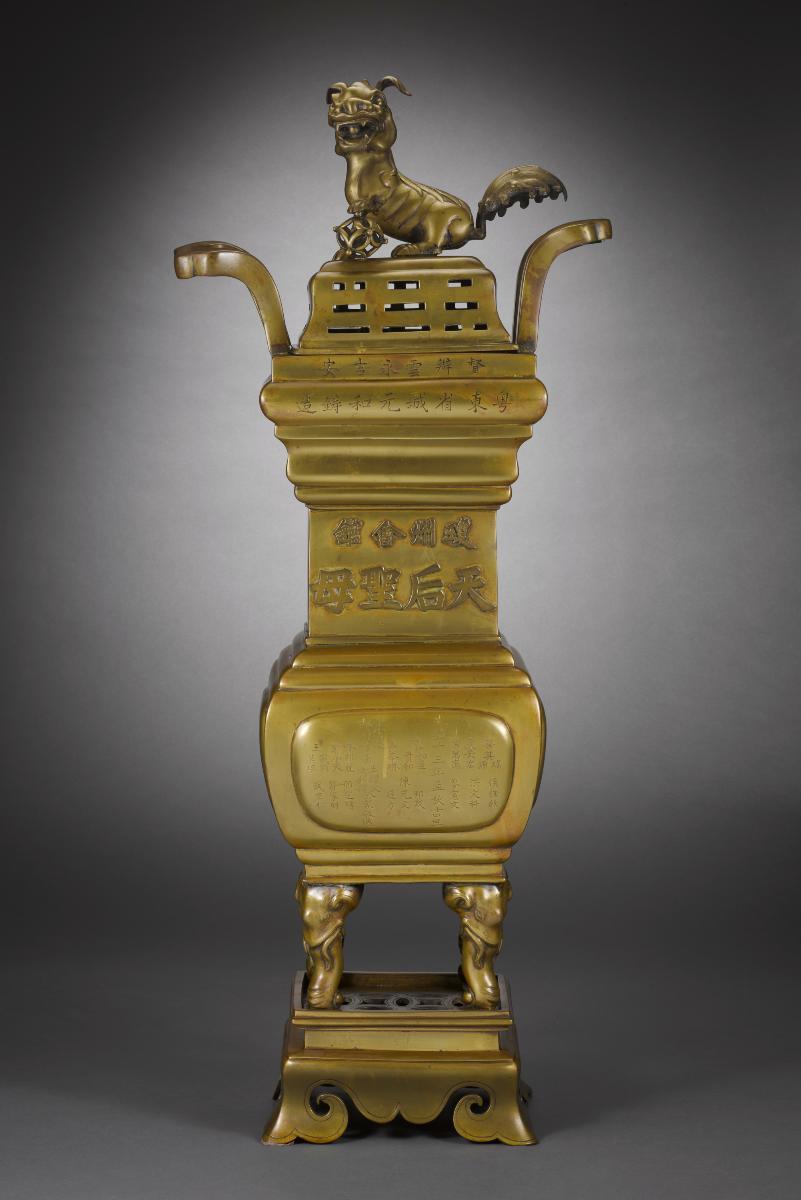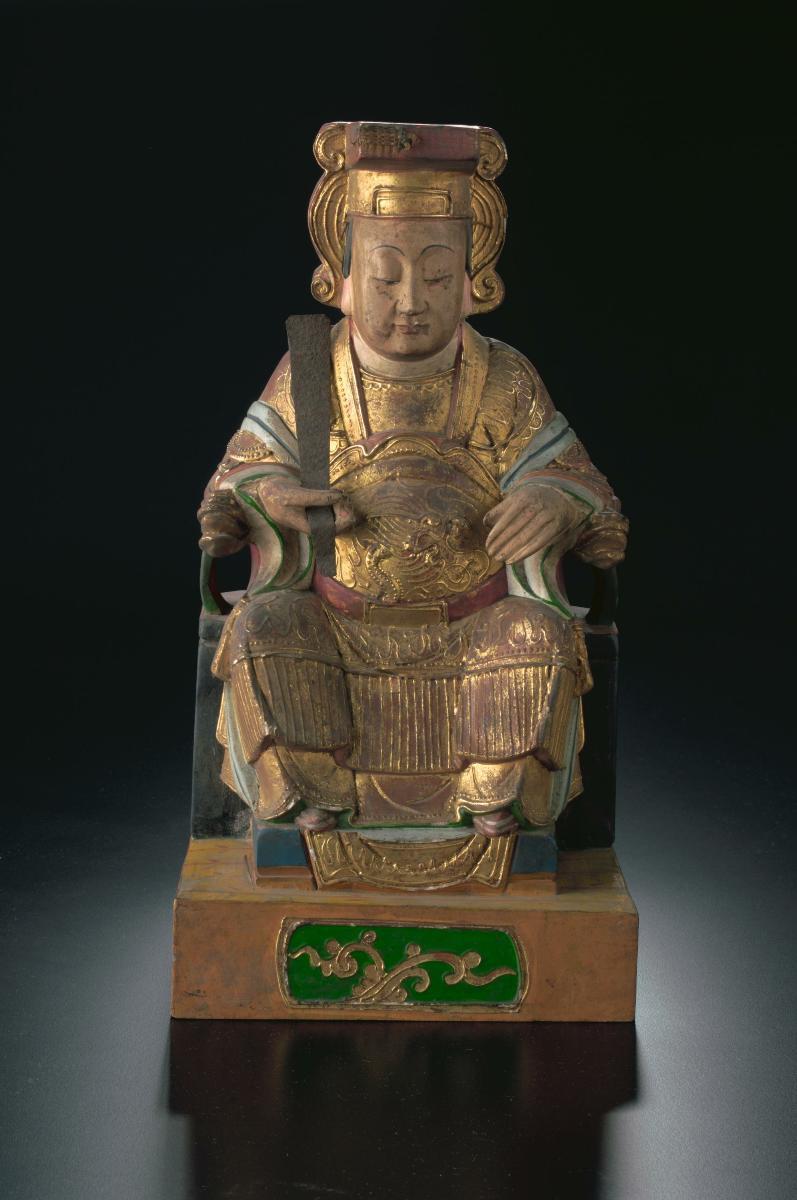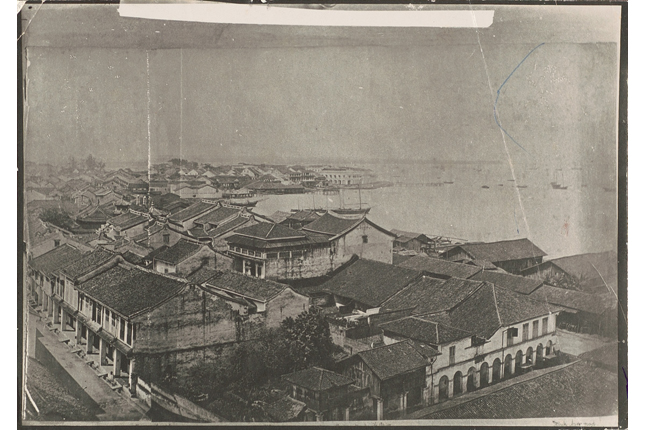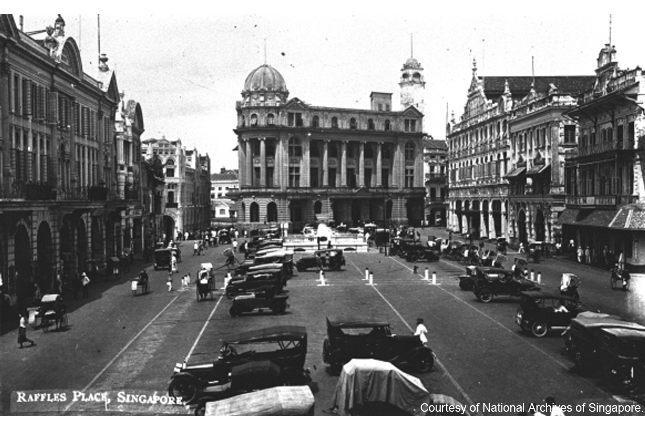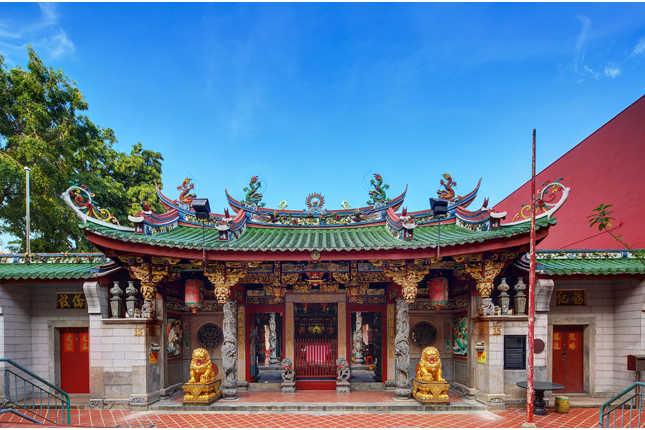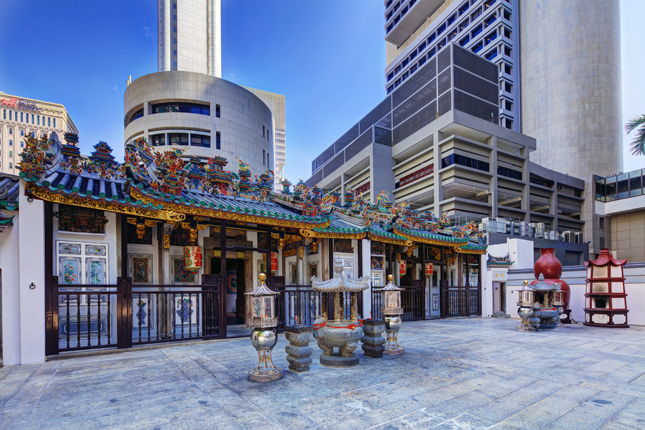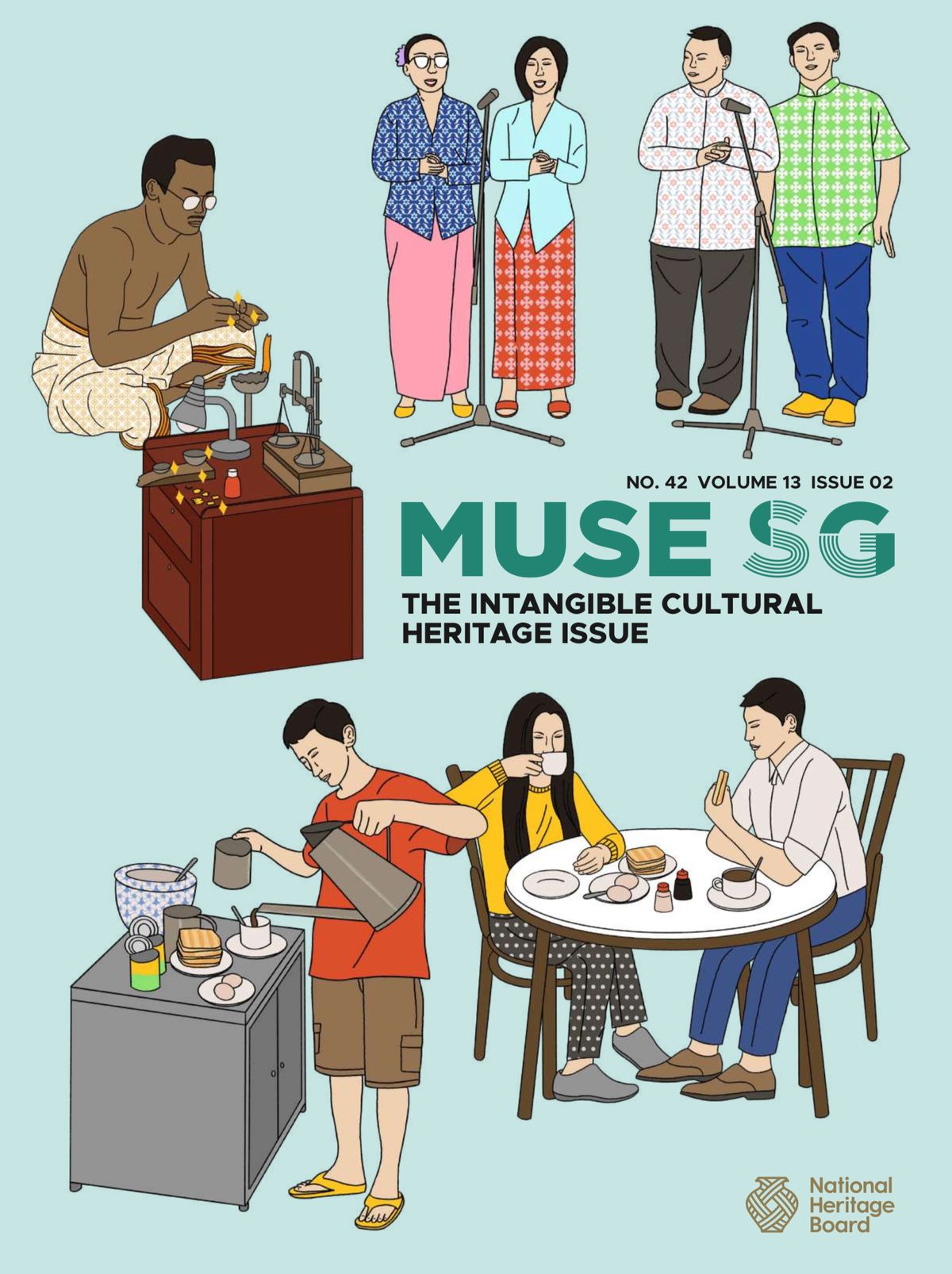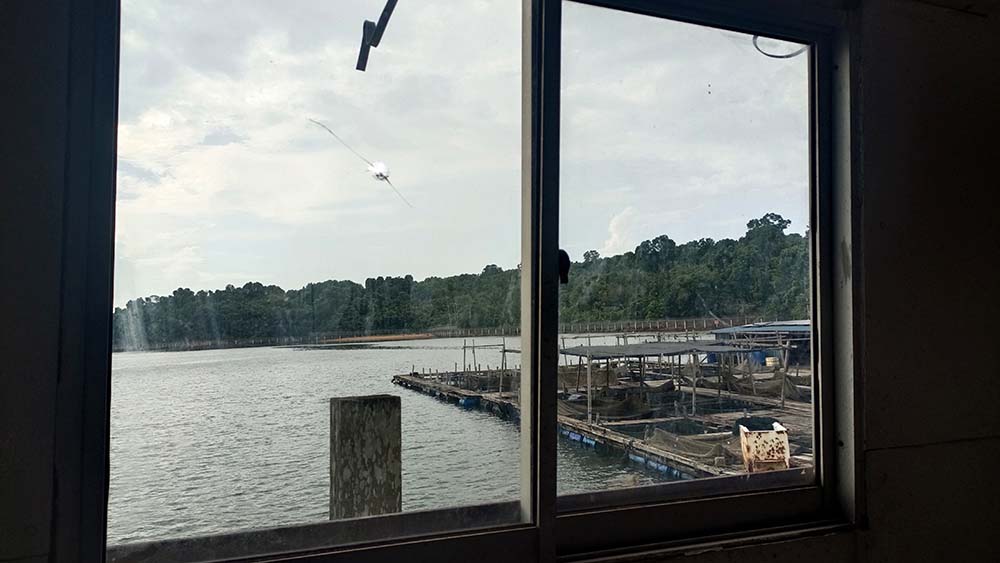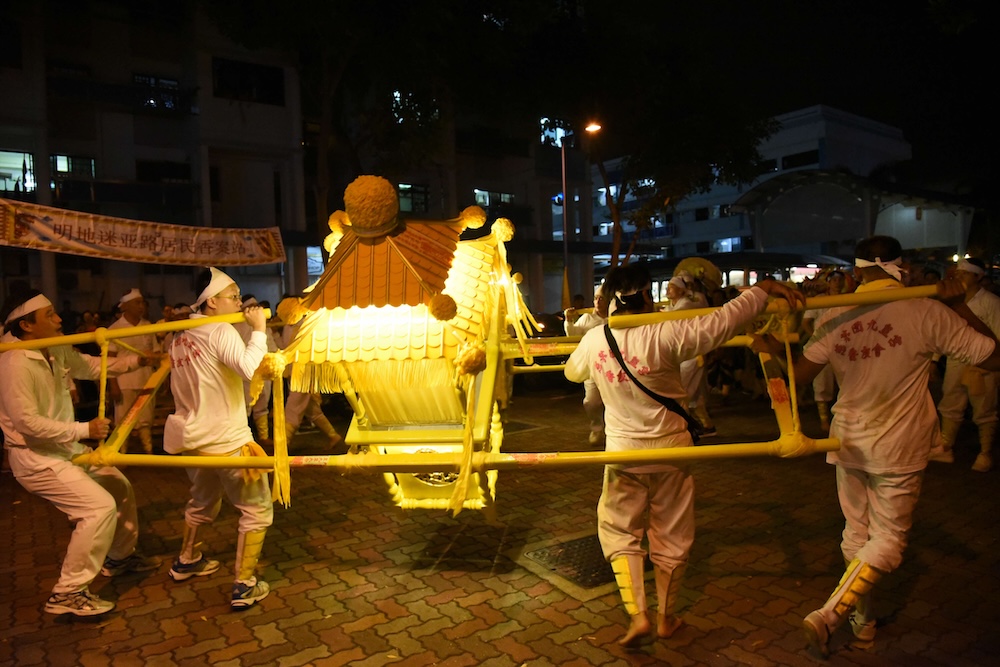Practices related to Mazu
Mazu (妈祖), also known as the Goddess of the Sea, is a sea deity popularly worshipped in the provinces of Fujian and Guangdong in Mainland China, Taiwan, Hong Kong, Macau, and various parts of Southeast Asia with a sizeable Chinese population like Malaysia, Singapore and Indonesia. She is believed to have authority over the Four Seas Dragon Kings (四海龙王) and serves as a patron deity for seafarers and all who depend on the sea for a living.
Worship practices include ritual offerings of food and joss sticks, festivals and street processions. The existence of sea deity worship here is a reflection of Singapore’s rich migration history and maritime past.
Geographic Location
In ancient times, the worship of sea deities was especially popular in the coastal provinces of South China due to the people’s dependence on the sea. These beliefs were brought to Singapore in the 19th and 20th centuries by migrants who journeyed by sea from Fujian and Guangdong provinces. The migrants built temples to install the statues they had brought along with them, and given their varied places of origin, it was common to find multiple temples dedicated to the worship of a particular deity.
Mazu is worshipped at 12 temples around Singapore today, including the Hokkien-built Thian Hock Keng, Teochew-built Wak Hai Cheng Bio and Hainanese-built Keng Chiu Tin Hou temples.
Communities Involved
Most community members involved in Mazu worship today are Chinese Singaporeans of various dialect groups—Hokkien, Teochew, Hainanese etc— who identify themselves as Buddhist or Taoist.
During the 19th century, temples were important social platforms for the overseas Chinese community for mutual assistance, protection, welfare, charity, medical assistance, ancestor reverence, education, mass weddings and the preservation and promotion of traditional culture. It was common for temples to house more than one deity and conduct highly syncretic worship rites, trends that have carried on to the present. For example, Thian Hock Keng Temple is dedicated to both Mazu (Goddess of the Sea) and Guan Yin (Goddess of Mercy), but it also houses other deities from Taoism, Buddhism and Confucianism in other halls.
As the best-known Mazu temple in Singapore, Thian Hock Keng’s annual birthday celebrations for Mazu, which falls on the 23rd day of the 3rd lunar month, include a mix of Buddhist prayer rituals, Taoist rituals and street procession festivities.
Associated Social and Cultural Practices
Thian Hock Keng’s birthday celebrations for Mazu span a period of four days and comprise of many activities, such as Buddhist prayer rituals and Taoist rites for devotees to seek blessings and protection, cultural performances and activities, open air getai (歌台, live music performances typically conducted in dialect) and traditional Hokkien string puppet shows. Devotees can buy special offerings which include red bunting (festive decoration made of fabric, plastic or paper, such as flags) and lanterns, longevity noodles and buns, prosperity cake (fa gao, 发糕), sweet towers, Mazu crown and gown and birthday lanterns.
The highlight of the celebrations is the street procession, Mazu’s Excursion of Peace (迎神赛会). Traditional Chinese acrobatics, lion and dragon dances are held to send off the street procession, which extends from Telok Ayer to Marina South Pier and stops by Boon San Lian Ngee Association (Wen Shan Lian Ye She, 文山联谊社) for an exchange of joss sticks. During the procession, devotees carry Mazu’s image in a swinging sedan chair, accompanied by contingents of other devotees carrying flags and banners, playing gongs and cymbals and other musical instruments, and dressed up in masks and costumes. The procession takes a ferry to Marina South Pier to bless the sea, and another round of traditional acrobatics, lion and dragon dances are performed to welcome and end the Excursion of Peace.
Some aspects of the celebrations in Singapore differ from the way they are conducted in Meizhou in Guangdong province, China. In Singapore, worship ceremonies are conducted exclusively by the temple. A tour bus is chartered to follow the street procession and ferries are chartered to bring Mazu’s image out to sea for the blessing. Offerings are usually sweets like prosperity cake and sweet towers. On the other hand, the celebrations in China place more emphasis on narrating Mazu stories through song and dance and offerings may be marine-themed.
Present Status
The continuity of sea deity worship depends on a variety of factors: the availability of temple premises, being able to register as a society, commitment and support from caretakers and volunteers, leadership renewals, and securing material resources. Thian Hock Keng fulfils the criteria on all counts. It is one of the most well-known temples in Singapore and has been designated as a National Monument. It has also adapted to the demands of a more technologically literate population by maintaining a regularly updated website in English and using social media to publicise its events and festivals. Furthermore, it has adopted the strategy of maintaining interactions and relationships with the original Putian Meizhou Mazu Temple in China, and was one of the stops for a week-long trip called “Mazu in South-east Asia: Revisiting The Maritime Silk Road” that began in Kuala Lumpur and ended in Singapore. This versatility in adapting to modern demands while emphasising its traditional links to Mazu worship in China and educating the population on the practice through exhibitions, guided tours and music performances will most likely ensure the continuity of Mazu worship into the future.
References
Reference No.: ICH-074
Date of Inclusion: October 2019
References
Koh, J. and Ho, S. Customs of Malaya and Singapore. California, Santa Barbara: Greenwood Publishing Group, 2009.
Singapore Hokkien Huay Kuan. Guardian of the South Seas: Thian Hock Keng and Singapore Hokkien Huay Kuan. Singapore: Singapore Hokkien Huay Kuan, 2006.
Tan, C.B. After migration and religious affiliation: religions, Chinese identities and transnational networks. China, Guangdong: Sun Yat-Sen University, 2015.
Zhang, G.D. & Ke, L. 妈祖文化与当代社会 (Mazu wenhua yu dangdai shehui). China: Xiamen University Press, 2016.
NUS Singapore Historical GIS project, http://shgis.nus.edu.sg/index.php/chinese-temples/ Accessed on 19 May 2018.




